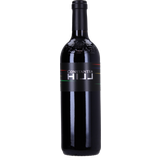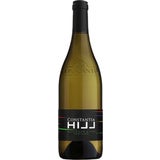The Stellenbosch Wine Region
Everything you need to know about the largest African wine region - Stellenbosch
The Stellenbosch wine region
Wild animals on safari, penguins on Boulders Beach, the cloud cover on Table Mountain or the southernmost tip of the continent, the Cape of Good Hope - what is the first thing that comes to mind when you think of beautiful South Africa? As a wine lover, this question can be easily answered: Stellenbosch!

- The colonisation of South Africa in 1652
- The French bring the wine
- Study viticulture in Stellenbosch
- The largest and most important wine region in Africa
- South African wine in our shop
The colonisation of South Africa
Stellenbosch is not only the largest and most important wine-growing region in South Africa, it's the largest on the entire African continent. But first things first. The year is 1652 and the Dutchman Jan van Riebeeck has built a supply station on the southern tip of Africa. Cape Town was founded in the same year and derives its name from the Cape of Good Hope. Somewhat later, and about 50 km to the east, the governor of Cape Town, Simon van der Stel, laid the foundation stone in 1679 for what was then the settlement of Stellenbosch. It took its name from him, and Stellenbosch is the second oldest European settlement in all of South Africa after Cape Town.

The French bring the wine
French Protestants, known as Huguenots, were being persecuted in distant France and most of them were driven out of the country. Many ended up in other European countries, but some come, via the Netherlands, as far as South Africa. In 1688, the fleeing Huguenots arrived in Stellenbosch and brought viticulture to South Africa.
Stellenbosch today
Since the French brought viticulture into the country, the area under cultivation has grown to almost 17,000 hectares, i.e. around 17% of the total area in the country is covered by vines. Thus, Stellenbosch developed from a small settler village to the largest wine-growing region in Africa. Today there is even a university in the city where you can study viticulture and oenology, as well as the oenological institute, which runs laboratories and cultivates experimental vineyards.
Facts about local viticulture
On the other side of the world, the conditions are different and the soil of the vineyards is coloured deep red. Why? This is because of the crushed granite soils that are typical here. There are also slate and sandy soils on which the vines grow. The little precipitation that prevails falls mainly in the summer and is then stored in the ground. The roots of the vines reach deep into the ground and so are able to take care of themselves in the dry and hot seasons. The finest red and white wines grow at between 150 and 400 metres above sea level. Well-known South African grape varieties include the red Cabernet Sauvignon, Shiraz and Merlot, as well as the white Chardonnay and Sauvignon Blanc.

South African wine in our shop
If you want to try good wine from South Africa, you've come to the right place. At 9wines, we have the best red and white wines from the Stellenbosch wine region. You can get great wines for fair money from the Aaldering Wines, which is one of the few wineries to be given 95 points in the South Africa Wine Index. You can find an Austria-South Africa cooperation at the Constantia HILL winery. As the name indicates, this is a project by the star Austrian winemaker, Leo Hillinger.

Related products
-
 4.5 (2)
4.5 (2)Aaldering Wines Florence by Aaldering Red Blend 2022, 0,75 L
- Cuvée of Cabernet Sauvignon, Merlot, Shiraz and Pinotage
- Round and balanced, with plenty of punch
- A top cuvée at an affordable price
€ 14,99 (€ 19,99 / L)Delivery by January 03
-
-

Leo Hillinger Constantia HILL red 2020, 0,75 L
- Typical New World Cuvée
- Power and fruit
- Everybody's Darling
€ 17,99 (€ 23,99 / L)Delivery by January 03
-
-
 4.2 (6)
4.2 (6)Leo Hillinger Constantia HILL white 2021, 0,75 L
- 90% Sauvignon Blanc, 10% Semillon
- Dry, fruity, balanced
- Classically maturated in a stainless steel tank
€ 13,49 (€ 17,99 / L)Delivery by January 03
-
Magazine Articles:
-
Austria: Free standard delivery from € 49,90
-
We operate in a
climate-conscious manner. -
Free
returns Secure payments
with SSL encryption technology



